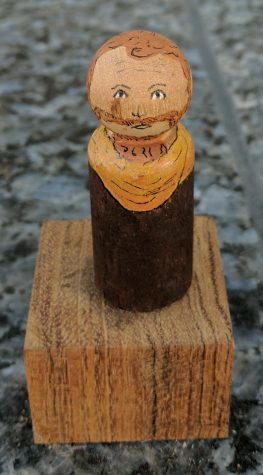We stand on the shoulders of miniatures
January 31, 2017
The Foucault Pendulum’s pegs are actually painted miniatures of influential scientists and thinkers. Here’s a feature on just four of them:

Irene Joliot-Curie (1897-1956) was an influential radiochemist who shared the 1935 Nobel Prize in Chemistry with her husband Frederic for their discovery of induced radioactivity: by exposing stable isotopes to specific forms of radiation, stable isotopes can be transmuted into radioactive isotopes.
Joliot-Curie was the daughter of renowned scientists Pierre and Marie Curie. Her two children, Helene and Pierre, are also established scientists.

Linus Pauling (1901-1994) was a prolific quantum chemist and biochemist as well as a peace activist. He is one of only four people to have been awarded more than one Nobel Prize, and the only person to have been sole recipient of both.
He won the 1954 Nobel Prize in Chemistry for his work developing orbital hybridization theory and won the 1962 Nobel Peace Prize for his activism advocating nuclear disarmament.

Democritus
Democritus (c. 460-370 B.C.E.) was an ancient Greek pre-Socratic philosopher known for theorizing that the universe is composed of indivisible units called “atoms” which are constantly in motion, separated by empty space and indestructible. All objects are formed from the reconstitution of “atoms.”
Though none of his works survive as primary sources, he was a prolific writer on ethics, epistemology, etiology, astronomy and mathematics.

Maria Mitchell
Maria Mitchell (1818-1889) was the first female professional astronomer in America.
Mitchell discovered “Miss Mitchell’s Comet” in 1847, achieving fame across the western world. For this discovery, she was awarded a medal by the King of Denmark, who gave prizes to the discoverers of comets too faint to be observed with the naked eye.
The Maria Mitchell Observatory at her birthplace of Nantucket, Massachusetts, is dedicated in her honor.